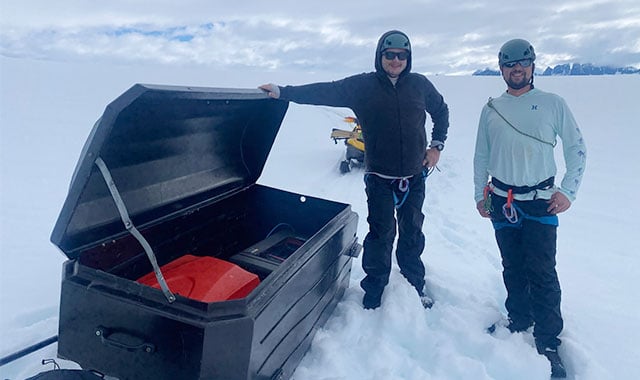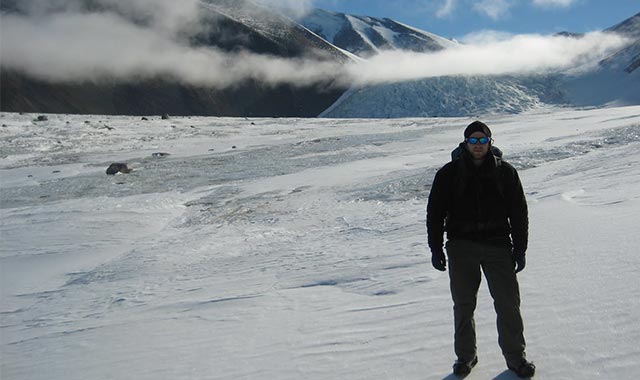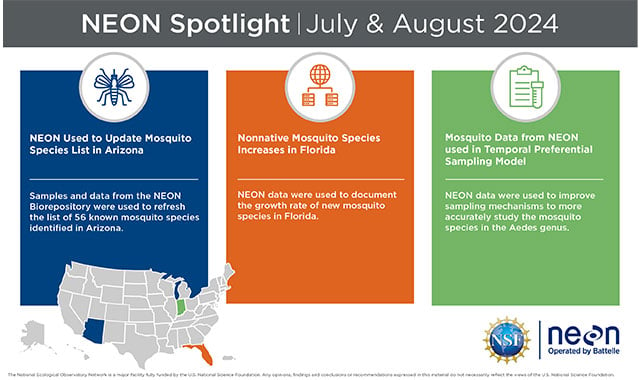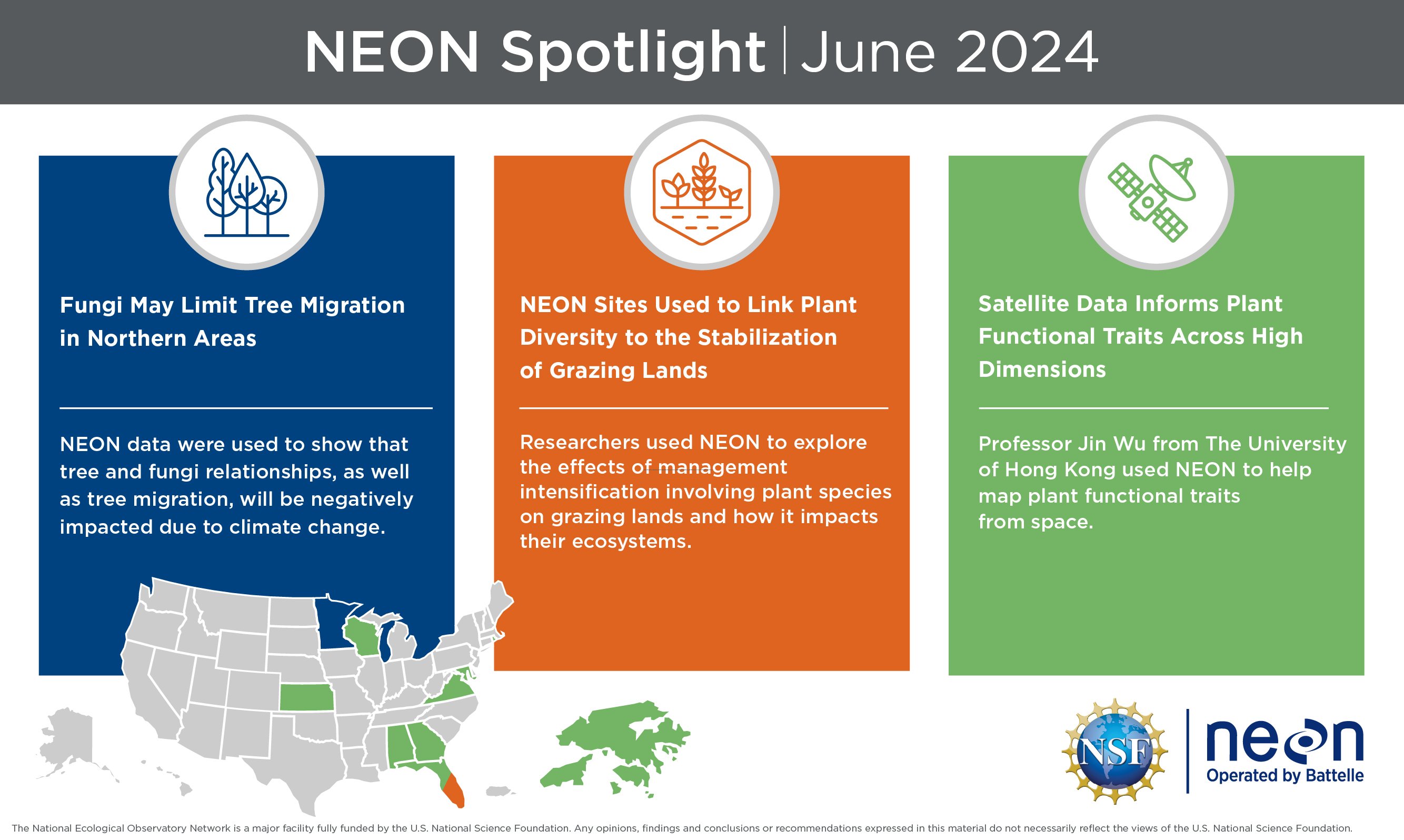Latest Innovations with NEON: Creating a lunar biorepository, tracking changes in soil moisture, and surveying macrolichens
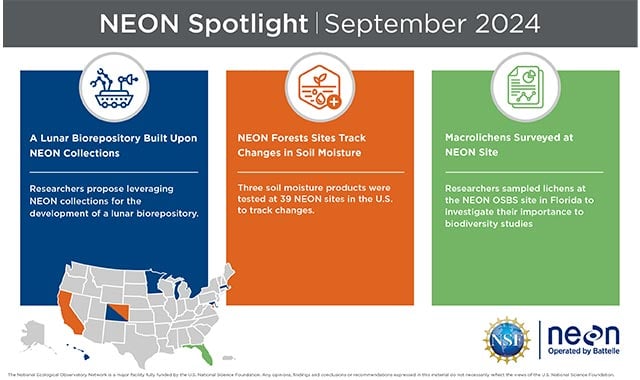
Since 2016, Battelle has had the privilege of managing and operating the National Ecological Observatory Network (NEON) in partnership with the U.S. National Science Foundation (NSF).
Originally conceived at the turn of the millennium and designed to collect measurements for three decades, NEON is a U.S.-wide network of 81 field sites that offers the global scientific community access to rich, continent-scale datasets that are driving ecological research.
This month, we are spotlighting three examples of the latest research leveraging NEON data. Below, you can read more about NEON’s role in creating a lunar biorepository, measuring soil moisture changes in forests, and the importance of lichens in biodiversity.
The latest news from NEON includes:
A Lunar Biorepository Built Upon NEON Collections
Earth’s biodiversity is in peril even with the most optimistic models of global climate change. Scientists have turned their attention to Earth’s closest celestial body, the moon (namely its cold poles), to explore the creation of a lunar biorepository using cryopreservation to store samples of animals, plants, and microbial samples with little human interaction. This project would also provide scientists with an understanding of how cells behave in space. Samples collected at NEON will be used to start collections and generate fibroblast cells. Once kicked off, this project will span decades and call for collaboration between nations, agencies, public and private stakeholders, scientific partners, and more to help protect Earth’s biodiversity on the surface of the Moon, while potentially expanding the realm of the livable universe.NEON Forests Sites Track Changes in Soil Moisture
Soil moisture influences processes that affect forest health such as tree growth and fire occurrence, as well as the impact of insects and pathogens. Often measured through satellite-based sensors and remote sensing data, soil moisture can remain unclear. Researchers examined three multiyear soil moisture products at 39 sites in the U.S. At 21 of the unforested sites, the performance of the three products was similar for the surface soil moisture, and all three products were able to track temporal changes in the surface soil moisture. At 18 of the forested sites, the product performance declined. Findings show that two of the products (SMAP-L4 and NLDAS) can be used confidently to track changes in soil water content in forests across a wide range of sites. Being able to monitor soil moisture will allow for a greater understanding when it comes to validating data.Macrolichens Surveyed at NEON Site
Researchers are assessing lichens as an organismal group at a NEON site in north-central Florida, in order to provide a baseline survey of macrolichens. In total, they collected 74 species of macrolichens and found that diversity of lichens comprised of 30% of macrolichen diversity from the state of Florida, with eight considered “rare” and 12 “infrequent” across the state. This research reveals macrolichens to be more diverse than NEON samples of mammals and fish, leading researchers to suggest that lichens be potentially included in future NEON datasets so they can be leveraged in future cross-taxon studies of biodiversity at the continental scale.
Sponsored by the U.S. National Science Foundation and operated by Battelle, NEON is a continental-scale ecological observatory network dedicated to providing high-quality, consistently generated, standardized data that are free and available to all users. By enabling scientists, researchers, and students to address critical questions and understand ecosystem changes over time, the NEON program allows the ecological community to tackle questions and problems at a scale that was not possible before.
Related Blogs
BATTELLE UPDATES
Receive updates from Battelle for an all-access pass to the incredible work of Battelle researchers.

